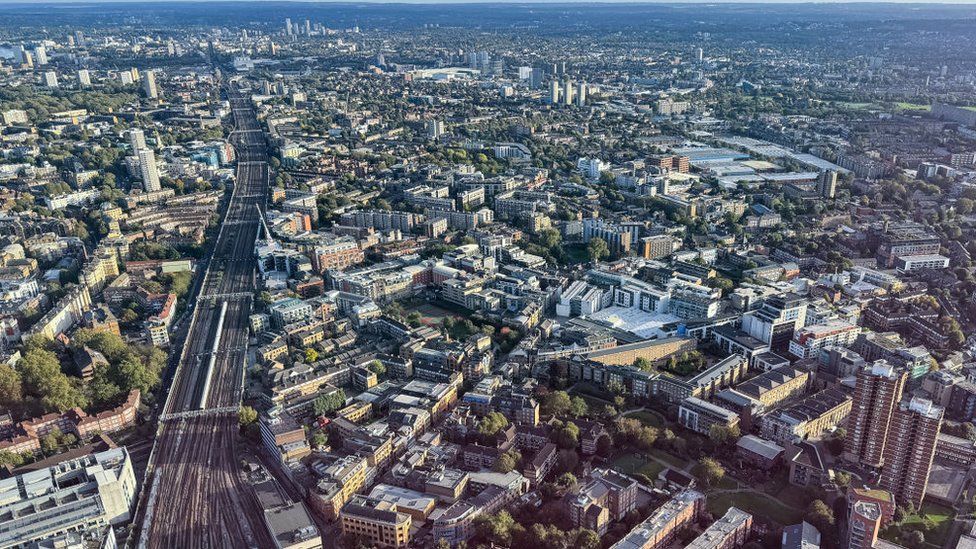London population fell by 75,000 in Covid, says report
- Published

London's population fell during Covid by 75,000 but has since "bounced back", a think tank's report has found.
Centre for Cities said Londoners had a "short-lived" escape to the country in the pandemic but the city's population is now thought to be higher than ever.
The independent think tank warned the capital's infrastructure was "creaking under the weight of its population".
A spokesperson for the Mayor of London said the growth was a "testament" to London as "the best city in the world".
'Abnormally large numbers'
According to the report, international immigration into London continued during the pandemic, but at a lower rate than usual.
It was migration out of London to the countryside that led to the capital's decline in population between 2020 and 2021, with 191,000 people leaving.
The think tank said that people aged 30 to 45 left London in "abnormally large numbers" within that year.
It led to a net loss of 93,600 people in that age group - almost double a normal year - the report said.
And a higher proportion did not have children when they moved compared with previous years, the report found.
Commuting distance
As a result, London's population fell by 75,500 people between mid-2019 and mid-2021 - a decline of 0.7%, or the equivalent of the population of a town the size of Tunbridge Wells in Kent.
Of those who left, 58% moved within commuting distance to London in the South East and East of England. This was in line with the usual pattern, the think tank found.
But in some inner London boroughs, such as Camden and Tower Hamlets, the population has now exceeded their pre-pandemic average, Centre for Cities found.
In Camden, 2,430 more people moved in from elsewhere in England and Wales than moved out between 2021 to 2022, compared to 1,710 in an average pre-pandemic year.
The think tank said data was not yet available up to 2023 but the capital's population was likely "well above" pre-pandemic levels now.
It had almost returned to its pre-pandemic peak by mid-2022 and immigration figures are expected to have boosted this further.
Andrew Carter, chief executive of Centre for Cities, said London's infrastructure was "creaking under the weight of its population".
"While there was a 'race for space' during the pandemic, this data shows it to have been short lived," he said.
"The big challenges associated with London remain. Delays to big infrastructure projects and housing delivery will constrain London's potential."
As Labour's Sadiq Khan launched his campaign to become London's mayor for the third time, he pledged to double council home building.
Conservative candidate Susan Hall has said she would build more affordable family homes, while Zoe Garbett has said a Green mayor would acquire more affordable housing on the open market. Liberal Democrat candidate Rob Blackie has also stated he would greatly increase the amount of all housing built.
Centre for Cities' definition of London is the "primary urban area" of London which includes local authorities Broxbourne, Elmbridge, Epsom and Ewell, Gravesham, Hertsmere, Runnymede, Spelthorne, Three Rivers, Watford and Woking.
Listen to the best of BBC Radio London on Sounds and follow BBC London on Facebook, X and Instagram. Send your story ideas to hellobbclondon@bbc.co.uk
Related Topics
- Published18 March
- Published2 November 2022
- Published18 March 2019